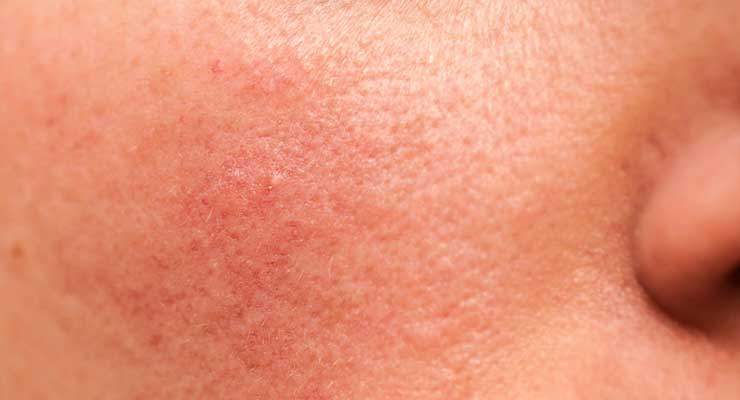Rosacea is a skin disorder that is rarely seen in kids, according to Rosacea.org. The majority of people affected by this chronic condition are adults ages 30 to 50. Women are more likely than men to develop it, and fair-skinned, blue-eyed women most of all. Still, children can develop rosacea, although the symptoms are often mistaken for other, more common skin disorders.
Causes
Scientists do not know the exact cause of rosacea, according to Rosacea.net, an informational website published by the American Academy of Dermatology. Some believe the body’s immune system triggers the condition, while others believe it is triggered by a bacterium or by mites that live in the follicles on the scalp. Still others think that environmental factors or even genetics causes the blood vessels directly under the skin in the face to swell up, triggering a rash and other symptoms.
Symptoms
Rosacea manifests itself in several ways. The earliest symptom, and the one most often seen in children, is a general flushing of the cheeks that comes and goes, according to the Beating Rosacea website. Kids with rosacea may appear to blush easily. In more severe cases, rough, red patches of skin may appear on the face, neck and scalp. Pimple-like bumps may also occur. The skin on the face may become very dry or even swell up. Rosacea can also affect the eyes, which is especially serious in children and is called ocular rosacea.
Considerations
The symptoms of rosacea in kids can all be attributed to more common skin conditions found in children, such as eczema, food allergies and baby acne. For that reason, it is often difficult to get a diagnosis of rosacea in children. In fact, only 40 percent of children with rosacea even present with symptoms on the skin, according to EyeWorld. Still, it is important to be diagnosed, because children with rosacea often are most affected in the eyes.
Warning
Occular rosacea can be severe in children and is often under-diagnosed. The average age of a child who develops rosacea is age six, but many are not diagnosed until they are nine or older, according to EyeWorld. This can lead to serious complications if the rosacea has moved to the eyes. In fact, 30 percent of children diagnosed with occular rosacea already had experienced decreased vision. If your child has consistently red, irritated, itchy eyes, develops bumps on the eyelids, and has a family history of rosacea, see a doctor immediately and ask to be tested for occular rosacea.
Prevention/Solution
Rosacea can’t be prevented, but it can be treated. Children with rosacea on their faces should use sunblock to help prevent skin irritation. Older children can use acne medications, which sometimes helps reduce the severity of the symptoms. Topical antibiotics can help reduce the chance of infection in serious cases. Occular rosacea is treated with tetracycline in children over the age of seven (some doctors wait until a child is 10 or even 12), but because this medication can interfere with bone growth, younger children are usually given erythromycin or azithromycin. Warm compresses on the eyes can reduce pain and itching. Some children are placed on oral antibiotics if an infection occurs in the eye.





